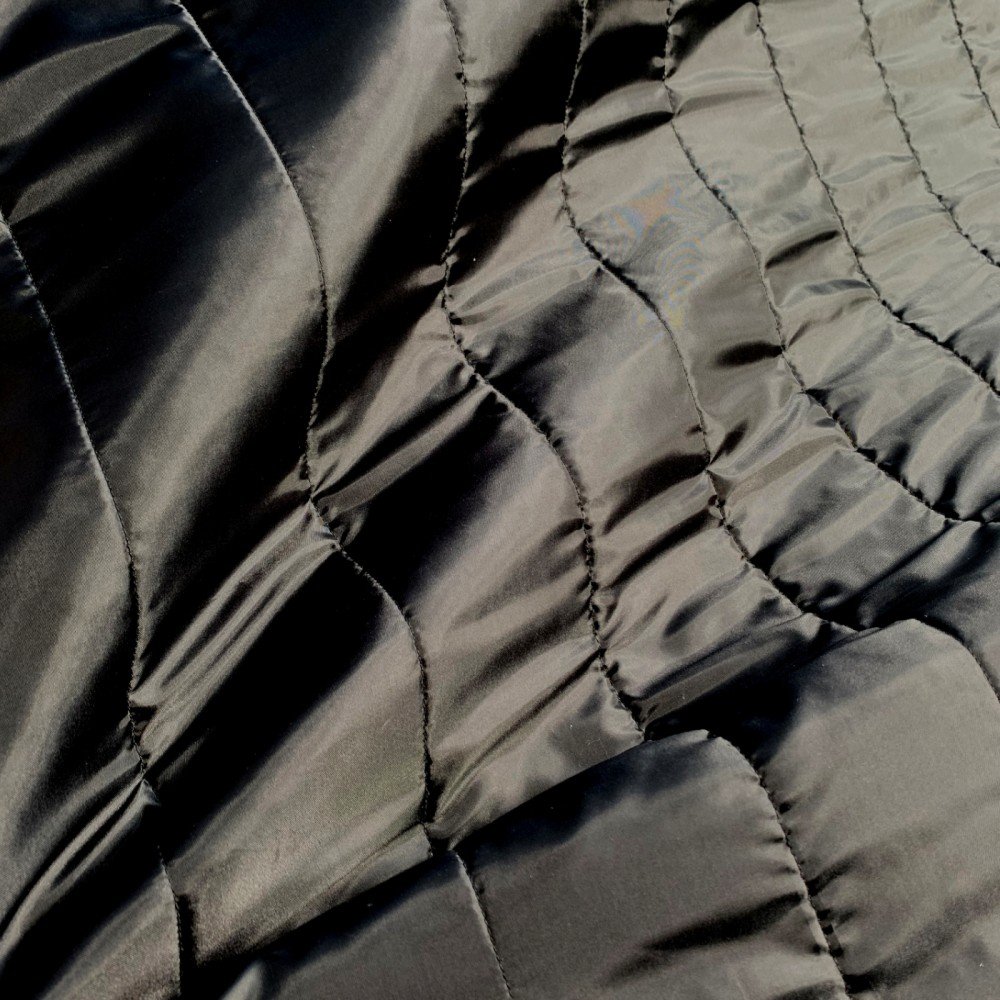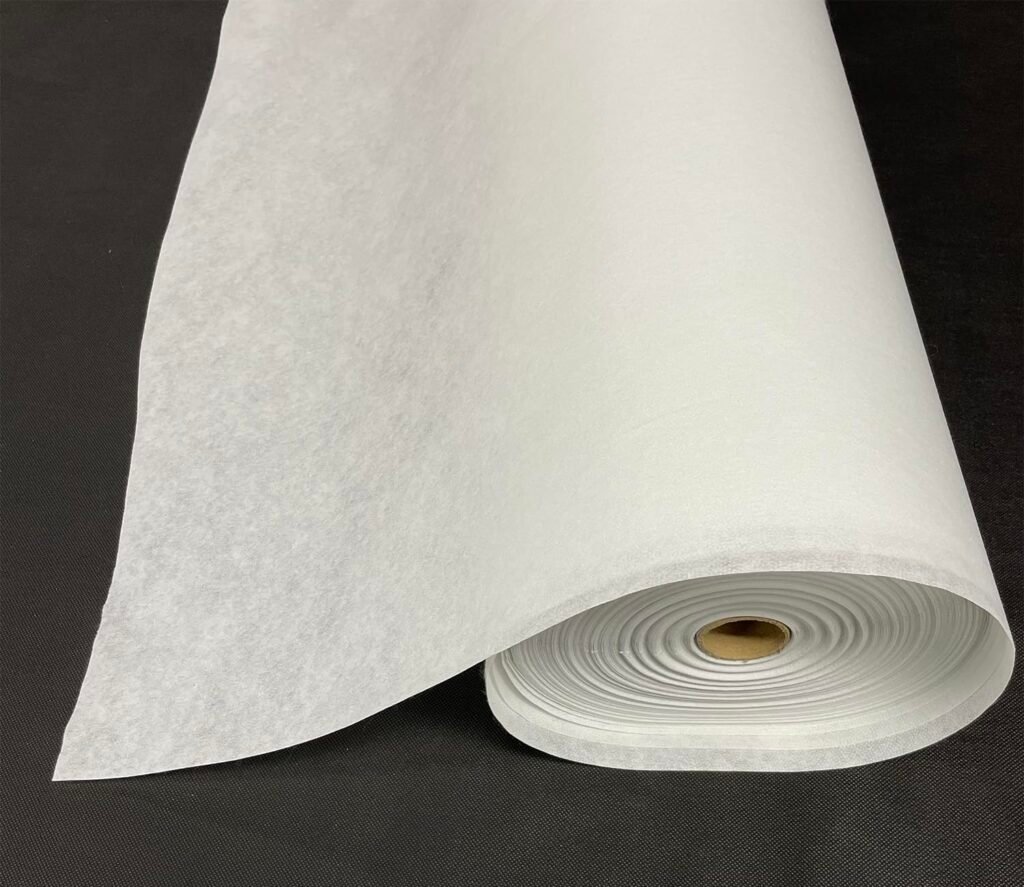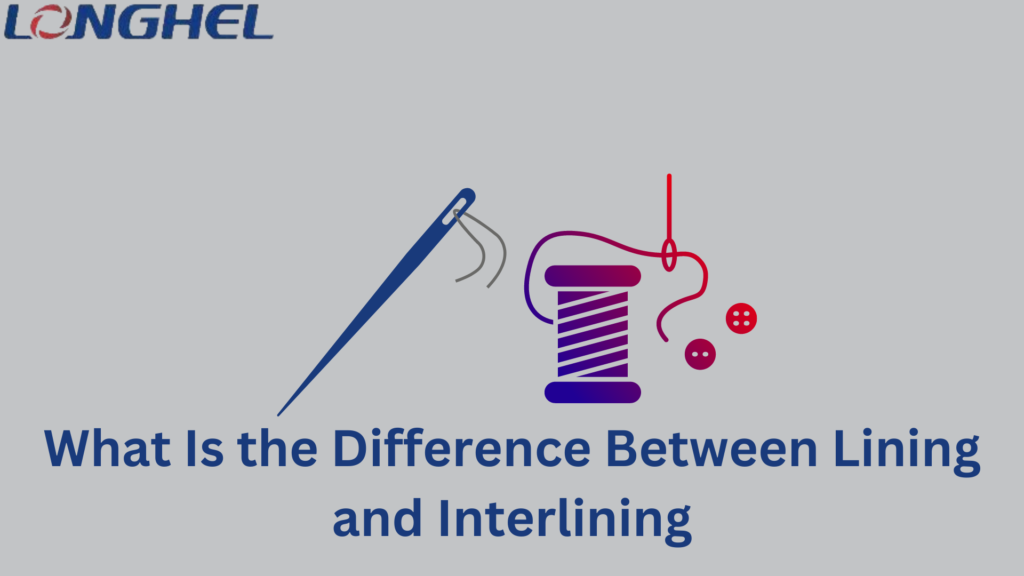Introduction
Understanding the difference between lining and interlining is important for anyone making clothes. Both are used in garments but have different jobs. The lining is the inner layer of clothing. It hides seams and makes clothes more comfortable. Interlining is placed between the outer fabric and the lining. It adds structure and warmth.
Choosing the right lining or interlining can improve how a garment fits and looks. Different materials and methods are used for each. This affects the feel and performance of the garment. Whether you’re a beginner or a professional, knowing how to use lining and interlining can improve your sewing projects.
This article will explain lining and interlining, their differences, and how to choose the right one for your needs.
What Is Lining?
The lining is a layer of fabric sewn inside clothes and other textile products. It covers the inner seams and gives a smooth finish. This inner layer makes the garment more comfortable and improves its overall appearance.
Materials Used for Lining
Different materials are used for lining based on the type of garment. Common materials include:
- Silk: Smooth and luxurious, often used in high-end garments.
- Polyester: Durable, easy to care for, and affordable.
- Cotton: Breathable and comfortable, ideal for everyday wear.
- Acetate: Soft with a shiny finish, often used in formal wear.
- Rayon: Breathable and silky, good for lightweight garments.
The choice of lining material depends on the outer fabric and the desired qualities, such as comfort, breathability, and durability.
Applications of Lining
Lining is used in various types of garments and textile products:
- Clothing: Jackets, coats, skirts, dresses, and pants often have linings, which make them more comfortable and enhance their shape.
- Accessories: Bags, hats, and gloves, along with lining, hide seams and provide a finished look.
- Home Textiles: Curtains, cushions, and quilts may also be lined for durability and a neat appearance.
Benefits of Lining
Lining provides several benefits to garments and textile products:
- Comfort: The lining covers rough seams and edges, making the garment more comfortable.
- Improved Shape: Lining helps maintain the garment’s shape, preventing it from sagging or losing its form.
- Protection: It protects the outer fabric from sweat and body oils, extending the garment’s life.
- Aesthetic Appeal: A lined garment looks more finished and high-quality. It hides inner construction details, giving a cleaner look.
- Ease of Wear: Lined garments are easier to put on and remove as the smooth lining reduces friction.

What Is Interlining?
Interlining is a layer of fabric placed between the outer fabric and the lining of a garment. It adds support, structure, and warmth. Though it’s not visible, it’s crucial for the garment’s look and function.
Types of Interlining
There are two main types of interlining: sew-in and fusible.
Sew-in Interlining
This type is stitched to the fabric. It’s often used in high-end clothing because it gives a soft, natural feel.
Fusible Interlining
This type has glue on one side that sticks to the fabric when you iron it. It’s fast and easy to use, making it popular in ready-to-wear clothes. It provides firm support and is perfect for collars and cuffs.
Materials Used for Interlining
Various materials are used for interlining based on the garment’s needs. Common materials include:
- Cotton: Soft and breathable, great for lightweight clothing.
- Polyester: Durable and easy to care for, used in many garments.
- Wool: Warm and strong, ideal for coats and winter wear.
- Non-woven Fabric: Versatile, easy to use, and good for sew-in and fusible interlining.
- Horsehair Canvas: Traditional material used in tailored suits and jackets for extra structure.
Choosing the right material depends on the garment’s needs. Wool interlining adds warmth to coats, while polyester is strong and long-lasting for everyday wear.

Applications of Interlining
Interlining is used in various garments and textiles:
- Garments: Coats, jackets, suits, and dresses often intersect for structure and support. To keep them firm, it’s used in collars, cuffs, lapels, and waistbands.
- Home Textiles: Curtains, quilts, and upholstery use interlining for added body and
insulation. Interlined curtains, for example, provide better warmth and hang nicely.
- Accessories: Hats, bags, and belts use interlining to hold their shape and add strength.
Benefits of Interlining
The interlining offers many benefits:
- Added Structure: Interlining gives garments shape and prevents sagging. This is especially important in tailored clothing for a crisp, sharp look.
- Improved Insulation: Interlining adds warmth, making garments better for cold weather. This is especially useful in coats and jackets.
- Enhanced Durability: Interlining makes garments stronger and more resistant to wear and tear, which helps them look good and last longer.
- Better Drape: Interlined garments hang better and look smoother. This is important for dresses and suits that need an elegant appearance.
- Ease of Construction: Fusible interlining makes sewing easier and faster by adding support quickly. This saves time and effort in making clothes.
- Improved Aesthetic: Interlining helps garments look more polished and reduces wrinkles. This makes the outer fabric lay flat and look smoother.
Key Differences Between Lining and Interlining
Placement in the Garment
Lining and interlining are placed differently within a garment. The lining is the inner layer, directly touching the skin. It covers the inner seams, making the garment comfortable to wear. In contrast, interlining is sandwiched between the outer fabric and the lining. It is not visible but provides essential support and structure to the garment.
Primary Functions
The primary functions of lining and interlining are distinct. The lining makes the garment more comfortable by covering seams and giving a smooth finish. It also enhances the garment’s appearance by hiding inner construction details. Interlining, on the other hand, adds structure and support. It helps the garment maintain its shape and can provide insulation for added warmth.
Material Choice and Properties
Different materials are used for lining and interlining based on their functions. For lining, common materials include:
- Silk: Smooth and luxurious, used in high-end garments.
- Polyester: Durable and easy to care for.
- Cotton: Breathable and comfortable.
- Acetate: Soft with a shiny finish, often used in formal wear.
- Rayon: Breathable and silky, suitable for lightweight garments.
For interlining, common materials include:
- Cotton: Soft and breathable, suitable for lightweight clothing.
- Polyester: Durable and versatile.
- Wool: Warm and strong, ideal for winter garments.
- Non-woven Fabric: Versatile and easy to use, suitable for various applications.
- Horsehair Canvas: Used in tailored suits and jackets for extra structure.
The choice of material depends on the garment’s needs, such as comfort, durability, warmth, and structure.

Techniques of Application
The techniques for applying lining and interlining are also different. The lining is usually sewn directly to the garment’s outer fabric. This can be done through various methods, such as bagging or sewing the lining to the facing.
Interlining can be applied in two main ways:
- Sew-in Interlining: This type is stitched to the fabric. It is often used in high-end garments because it provides a natural feel and flexibility.
- Fusible Interlining: This type has an adhesive on one side that bonds to the fabric when pressed with an iron. It is quick and easy to apply, making it popular in ready-to-wear clothing.
How to Choose Between Lining and Interlining
Factors to Consider
Choosing between lining and interlining depends on several key factors. Understanding these helps you make the best decision for your project. Consider the type of garment, the desired characteristics, fabric compatibility, and construction skills.
Type of Garment or Textile Product
The type of garment or textile product is important.
- The lining is used in jackets, coats, skirts, and dresses. It covers seams and provides a smooth interior.
- Interlining is used in coats, jackets, suits, and curtains. It adds structure and warmth.
- If you need a soft inner layer, choose lining. If you need support or insulation, choose to interline.
Desired Characteristics (Warmth, Structure, Comfort, Etc.)
Identify what you want in your finished product.
- Warmth: Use interlining for extra insulation, especially in winter clothes.
- Structure: Interlining adds structure and support. This is essential for suits and jackets.
- Comfort: Lining offers a smooth layer against the skin. It’s ideal for skirts and dresses.
- Aesthetic Appeal: Lining hides seams and construction details. This improves the look.
Match these characteristics to your garment’s needs to choose the right option.
Fabric Compatibility
Consider how the lining or interlining will work with the outer fabric.
- Lining Materials: Silk, polyester, and cotton are common. They should match the outer fabric in weight and feel.
- Interlining Materials: Cotton, polyester, wool, and non-woven fabrics are used. Ensure they work well with the outer fabric in adhesion (for fusible interlining) and balance.
Test a small piece of lining or interlining with your outer fabric to ensure compatibility.
Construction Methods and Skills Required
Think about the construction methods and your skills.
- Lining: Sewing in a lining requires techniques like bagging out or attaching to facings. It’s straightforward but needs precision.
- Interlining: Sew-in interlining requires careful stitching, while fusible interlining requires precise ironing. Fusible interlining is quicker but requires careful handling to avoid bubbles or wrinkles.
Choose the method that matches your skills and the time you can spend on the project.
Practical Tips for Using Lining and Interlining
Sewing Tips
- Cut lining and interlining pieces accurately based on your pattern.
- Handle fabrics gently to avoid stretching or distortion.
- Pin or baste layers to the outer fabric before sewing to keep them in place.
- Use a suitable needle for the fabric type and weight, sewing slowly for precision.
- Trim excess seam allowances and press seams neatly for a polished look.
Care and Maintenance
- Follow garment care labels, often recommending dry cleaning for lined items.
- Hang garments on padded hangers to maintain their shape.
- Avoid prolonged folding to prevent creases in the fabric.
- Regularly inspect linings for tears or loose seams, repairing them promptly.
- Air out garments occasionally to remove odors and moisture.

Conclusion
Knowing the difference between lining and interlining is crucial for anyone making clothes. The lining makes garments more comfortable by covering seams and creating a smooth inside. It also improves how clothes look. Interlining, on the other hand, adds support and warmth.
It goes between the outer fabric and the lining but stays hidden. Choosing between them depends on what you want: comfort and a tidy look with lining or extra structure and warmth with interlining. Picking the right one can improve how well your clothes fit and feel.

